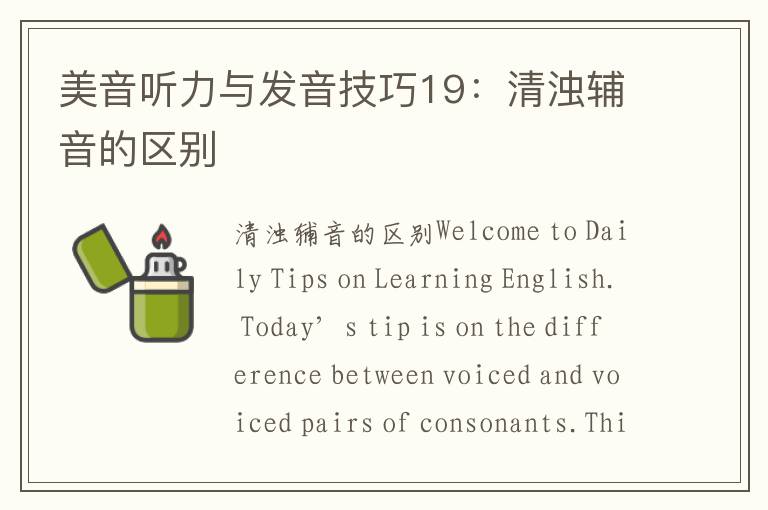
清浊辅音的区别
Welcome to Daily Tips on Learning English. Today’s tip is on the difference between voiced and voiced pairs of consonants.
This difference is important, as it is the basis for learning other aspects of spoken English. First, let’s explain this difference. Let’s compare some consonants, for example, t, d, p, b, k, g, s, z. These sounds differ only in that the first is voiceless and the second is voiced. Put your hand in front of your mouth and say” “t”, then say “d”. Try it again with “s”, “z”. Did you notice that “t”, “s” have more breath or air coming out of your mouth than “d”, “z”. Now put your hand around the front of your throat. Try it again. Say “t”, “d”, “s”, “z”. Did you notice that “t”, “s” have no vibration, whereas “d”, “z”, there’s a vibration?
The sounds with a lot of breath but no vibration are called voiceless, because the vocal cords are not vibrating. The sounds with little breath but a lot of vibration are called voiced, because the vocal cords are vibrating. Tomorrow we will discuss how vowels followed by voiceless consonants are shorter than vowels followed by voiced consonants.
Let’s just look at one example today. “bet”, “bed”. Did you notice how the vowel sound “e” is shorter before “t” and longer before “d”? Tune in tomorrow for more examples of this feature of English. That has been today’s tip on learning English.
--由英语编辑